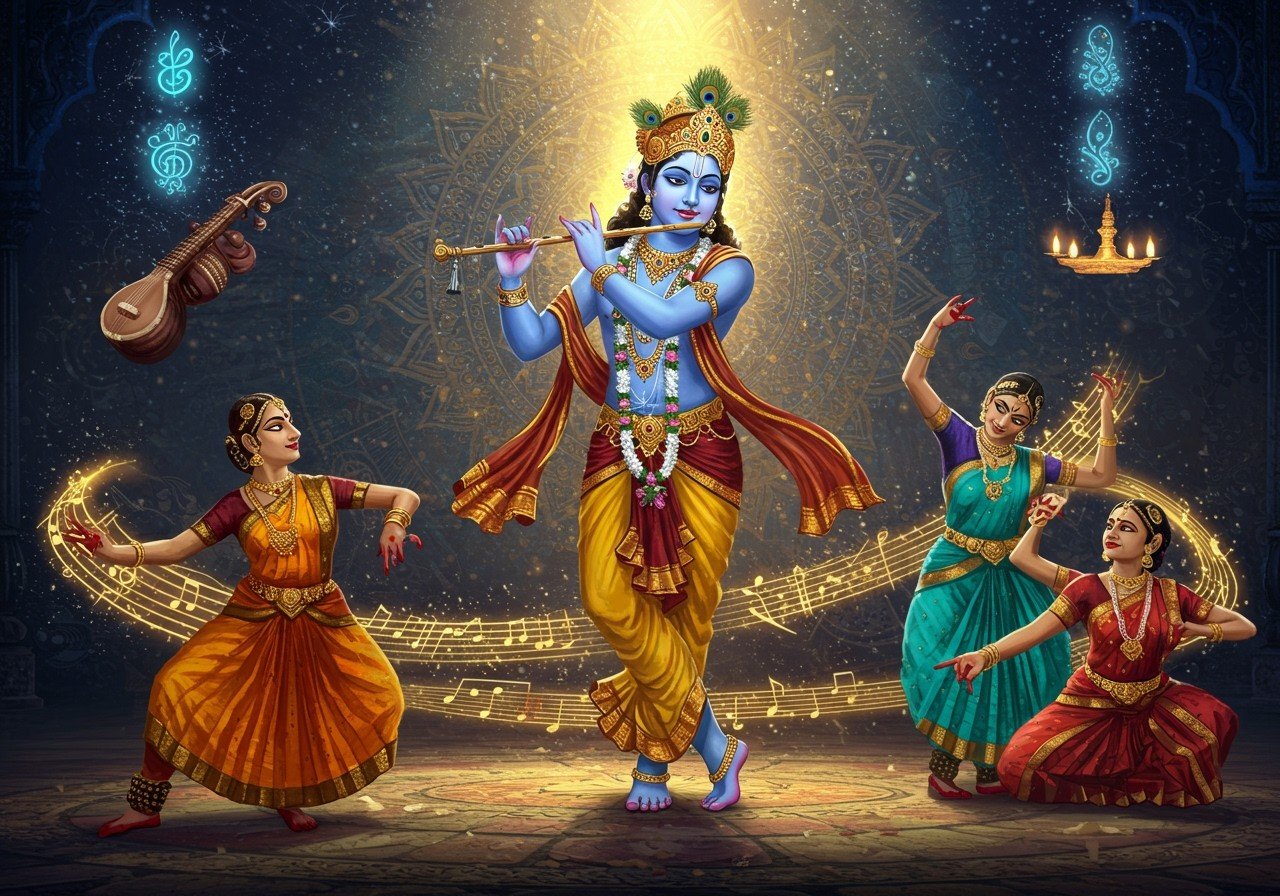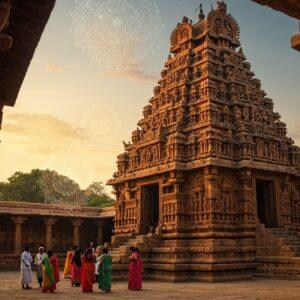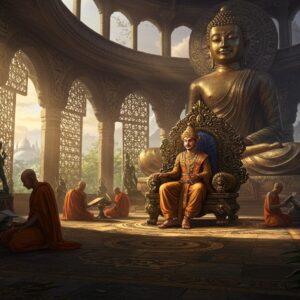
Hindu worship transcends prayer and meditation, embracing music and dance as integral parts of spiritual expression. In ancient India, these art forms were sacred offerings to deities, believed to please them and invoke blessings. Let’s delve into their significance and diverse forms.
Role and Significance
- Expression of Devotion: Music and dance are powerful expressions of love and reverence for the gods and goddesses, heartfelt tributes demonstrating sincerity and devotion. These art forms allow devotees to communicate their deepest emotions and connect with the divine on a personal level.
- Spiritual Ambiance: These art forms create a sacred atmosphere, transporting individuals to a higher state of consciousness. They evoke feelings of devotion, spiritual ecstasy, and inner peace, enhancing the worship experience. The combination of sound and movement creates a truly immersive spiritual experience.
- Connection with the Divine: Music and dance enhance the worship experience by bridging the gap between the worshipper and the divine. They make the connection tangible and deeply felt. They provide a pathway for experiencing the divine presence and fostering a sense of unity.
- Sacred Offering: More than mere entertainment, these performances are sacred offerings to the deities. Every note, every movement, becomes a prayer. The dedication and skill involved elevate these art forms to a form of worship in themselves.
- Community Worship: Devotional genres like bhajans foster a sense of community among worshippers. They bring people together in shared devotion, creating a powerful collective energy and strengthening spiritual bonds.
Forms of Music
- Bhajans and Kirtans: These devotional songs praise Hindu gods and goddesses. Bhajans are often simple yet profound, while Kirtans involve lively call-and-response singing, encouraging active participation and spiritual joy. Explore the world of Krishna Bhajans and their significance in devotional practice.
- Carnatic Kriti: These structured compositions in the Carnatic style express devotion to a deity or explore philosophical themes, showcasing the rich musical heritage of South India. They are known for their intricate melodies and rhythmic patterns, offering a complex and rewarding musical experience.
- Mantras, Songs, Recitations, and Prayers: Religious worship is often filled with these sounds. They create a sacred sonic landscape that enhances spiritual focus and connection with the divine. These vocal expressions create a resonant atmosphere of reverence and devotion.
Forms of Dance
- Bharatanatyam: Originating from Tamil Nadu, Bharatanatyam is renowned for its expressive storytelling, intricate footwork, and vibrant costumes. It often depicts stories from Hindu mythology and scripture, bringing ancient tales to life. Learn more about the art of storytelling through dance.
- Kathak: This North Indian dance form incorporates storytelling through elegant movements and rhythmic footwork. Its graceful and expressive nature captivates audiences and conveys profound spiritual messages.
- Kathakali: From Kerala, Kathakali is a dramatic dance form characterized by elaborate makeup, costumes, and expressive gestures. It combines acting, singing, and dancing to depict epic tales from Hindu mythology. Most Kathakali dancers are also singers, adding another layer of richness to the performance.
- Odissi: This classical dance from Odisha uses intricate footwork, expressive hand gestures, and graceful body movements to convey devotion to deities like Lord Krishna and Goddess Durga. It often depicts stories from ancient Indian scriptures. Discover how Krishna is celebrated in various art forms, including Odissi dance.
- Manipuri: Known for its Vaishnavism themes, Manipuri dance celebrates love stories like Radha-Krishna’s Rass Lila, expressing devotion through graceful movements and expressive storytelling.
- Nandi Dhwaja: This ritualistic dance is dedicated to God Shiva, expressing reverence and devotion through stylized movements and symbolic gestures. It is often performed during festivals and special occasions dedicated to Lord Shiva.
- Pooja Kunitha: A vibrant folk dance dedicated to Goddess Shakti, Pooja Kunitha celebrates the divine feminine through energetic movements and colorful costumes.
- Beesu Kamsale: This spirited folk dance is dedicated to God Mahadeshwara, a regional deity revered in parts of Karnataka. It involves rhythmic movements and traditional music, creating a vibrant and celebratory atmosphere.
Hindu Deities in Performance Arts
- Lord Shiva: As Nataraja, the Lord of Dance, Shiva’s cosmic dance (Tandava) symbolizes the universe’s creation, preservation, and destruction. Find beautiful murtis of Lord Shiva at Poojn.in. Explore how Lord Shiva’s dance is not merely an artistic expression but a representation of the fundamental forces of the cosmos.
- Lord Krishna: The Raslila, the dance of divine love with the Gopis, is another celebrated performance. Delve deeper into the divine love story of Krishna and Radha. It exemplifies the joyous and playful aspect of devotion, showcasing Krishna’s divine leela (play). Poojn.in offers a wide selection of Laddu Gopal murtis for your home altar. Consider enhancing your personal worship space with a Laddu Gopal murti.
These art forms are more than just cultural heritage; they are living traditions that continue to inspire devotion and joy. Music and dance in Hindu worship provide a profound path to connect with the divine, creating lasting impressions on hearts and minds. Learn how to create a Krishna altar in your home.


